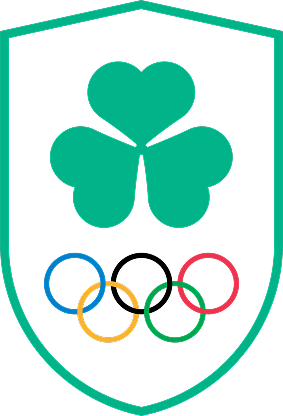National Federation
Irish Olympic Handball Association
Irish Sports HQ
National Sports Campus
Blanchardstown
Dublin 15
Tel: (+353 1) 625 1165
Email: [email protected]
Web: http://www.olympichandball.org/
Olympic History
The eleven-a-side outdoor game for men became an Olympic sport in Berlin in 1936, with the gold medal being won by Germany. The eleven-a-side form of the game did not reappear on the Olympic program after World War II and its popularity began to wane.
Because of the harsher climatic conditions, particularly in Scandinavia, a seven-a-side indoor game was developing with countries from Eastern Europe also quick to take up the indoor version.
The sport reappeared in the indoor form, once again for men only at the Munich Olympic Games in 1972. The women’s competition was introduced four years later in Montreal and both have remained on the Olympic program ever since.
In Beijing 2008 the women’s competition was increased from 10 to 12 teams; the same number that compete in the men’s tournament.
Technical Details
The Court
Handball is played on a court measuring 40m x 20m. The court is divided by a centre line and the nets at each end are 3m wide and 2m high. There are semi-circular goal area lines in front of each goal as well as a free throw line marked in the semi-circle.
The Handball
The handball has a circumference of 56cm and is made of leather or synthetic materials.
The Game
Matches are played in two 30 minute halves with a ten-minute interval at half-time. Play begins on the referee’s whistle, with a throw-off from centre court.
Each side has 12 players, with only 7 allowed on the court at any time and one of which is the goal-keeper. Goal-keepers can touch the ball with any part of the body in defence when inside the goal area. Other players can throw, catch, stop, push or hit the ball using hands, arms, head, torso, thigh and knees.
Players cannot kick the ball. They can hold the ball for a maximum of three seconds and take a maximum of three steps when in possession as well as bouncing the ball or rolling it with one hand. A goal is scored when the whole of the ball crosses the goal-line between the uprights of the goal.
Rules
According to the new rules and regulations, each team consists of seven players on the field and seven substitutes on the bench. An unlimited number of substitutions are allowed during the game. Two referees monitor the game. It takes place in an indoor sports hall on a court measuring 40 x 20 m. Goal posts, measuring 2 m high and 3 m wide, are placed at the centre of each end line.
The goal area is defined by a continuous, semi-circular line at a distance of 6m from each set of goal posts. Only the goalkeeper can enter this area. Each game includes two half-time periods of 30 minutes, with a 10-minute interval in between. If the match ends in a tie, the game goes into two 5-minute periods of extra time, with a 1-minute interval between. The team with the higher score (most goals) wins.
During the game, players are allowed to hold the ball for only 3 seconds before they pass, dribble or shoot it. They can also struggle for the ball with their body and hands, without hitting the opponent.
Players are not allowed to push, hit, or fall on their opponent. Handball competition at the 2004 Olympic Games will be run by the regulations adopted by the International Handball Federation (IHF), which are related to the Olympic Charter. According to the Charter, IHF assumes the control and application of the sport’s technical parameters and competition procedures during the Olympic Games.
Each country is allowed to register up to 15 players on its team, 14 of which can participate at any given match. Men and women’s Handball in the Olympic Games includes the preliminary, quarterfinal, semi-final and final rounds, as well as the play-offs, which are held to determine final standings for the teams that will take 5th to 12th position.
In the preliminary rounds (games), all the teams are divided into two groups. In the women’s competition each group consists of five teams, and in the men’s competition there are six teams. Each team then plays against every other team in its group.
Based on the number of points gathered in the preliminary rounds of the women’s competition, the teams that rank 5th in each group compete for positions nine and ten. In the men’s competition, teams that rank 6th in the preliminary rounds of each group must then face each other for positions 11 and 12.
The top four teams from each group proceed to the quarterfinal round. Teams of the first group face the teams of the second group with the reverse rank. To be specific, the first team of group A faces the fourth team of group B, the second team of group A faces the third team of group B and so on. Teams that lose in the quarterfinals compete in play-offs for positions five to eight.
The four winners of the four quarterfinal games advance to the semi-finals. The finals are held between the two winners of the semi-finals, and that final match determines the first (gold medal) and second (silver medal) place. The two teams that lost in the semi-finals face each other in a play-off match, in order to determine the third (bronze medal) and fourth place.
